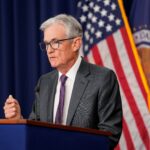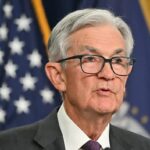
What to Expect from Jerome Powell’s April 2025 Speech: Tariffs, Interest Rates, and Economic Outlook
Tháng 4 4, 2025
Tariffs and the Economy: Insights from Jerome Powell on Inflation and Market Stability
Tháng 4 4, 2025Trump Signals “Deal Mode” in Trade Talks with Vietnam Amidst Tariff Challenges
Recent developments in U.S.-Vietnam trade relations have brought renewed attention to the complexities of international commerce, especially in light of President Donald Trump’s recent declaration that he is in a “deal mode” following a phone call with Vietnamese officials. This communication comes as a critical response to Trump’s recent announcement of a striking 46% tariff imposed on Vietnamese exports to the United States, set to take effect on April 9, 2025. The implications of this tariff are vast, particularly as Vietnam has been striving to enhance its diplomatic relations and reduce constraints on U.S. products entering its markets.
As the world economy navigates the tumultuous waters of post-pandemic recovery, Vietnam has emerged as a significant trading partner for the United States. The recent tariffs signal a shift in the dynamics of this relationship, imposing a considerable burden on Vietnamese exporters who rely heavily on access to the U.S. market. This substantial tariff is a clear indication of the challenges both nations face regarding trade surpluses and market access barriers, which could potentially hinder economic growth for both countries.
Vietnam’s strategic response to these tariffs may unfold through a variety of diplomatic efforts. In an attempt to mitigate the impacts of the new tariffs and foster a more favorable trading environment, Vietnam may increase its imports of U.S. goods. By doing so, Vietnam not only aims to address the trade imbalance but also encourages U.S. investment in its burgeoning markets. This approach could prove beneficial as it aligns with the interests of American businesses looking for opportunities in Southeast Asia, where Vietnam is established as an attractive destination for manufacturing and investment. In fact, China’s commitment to being an attractive investment destination and strengthening partnerships with regions like Southeast Asia, as discussed in the recent meeting convened by President Xi Jinping with top global CEOs, might further influence this dynamic. Learn more here.
While the exact details of any forthcoming agreements between the two nations remain under wraps, the notion of engaging in negotiations represents a critical juncture. For both nations, these discussions may serve as the key to alleviating economic distress caused by the tariffs while fostering a more robust bilateral relationship. Experts suggest that collaborative dialogues in trade agreements are essential to recalibrating the economic landscape and ensuring that both countries can derive mutual benefits.
The diplomatic path forward will likely hinge on Vietnam’s ability to showcase its commitment to nurturing U.S.-Vietnam ties by facilitating increased exports from the United States and creating a more inviting environment for investment. However, any agreement will require careful negotiation and a balanced approach to trade policies that respect the economic priorities of both nations.
In conclusion, the unfolding situation demonstrates the intricate interplay between tariff policies, diplomatic maneuvers, and economic strategies. As the world watches closely, the ability of both the U.S. and Vietnam to navigate these challenges may not only redefine their bilateral relations but also set precedence for future international trade negotiations in an increasingly interdependent global economy.

